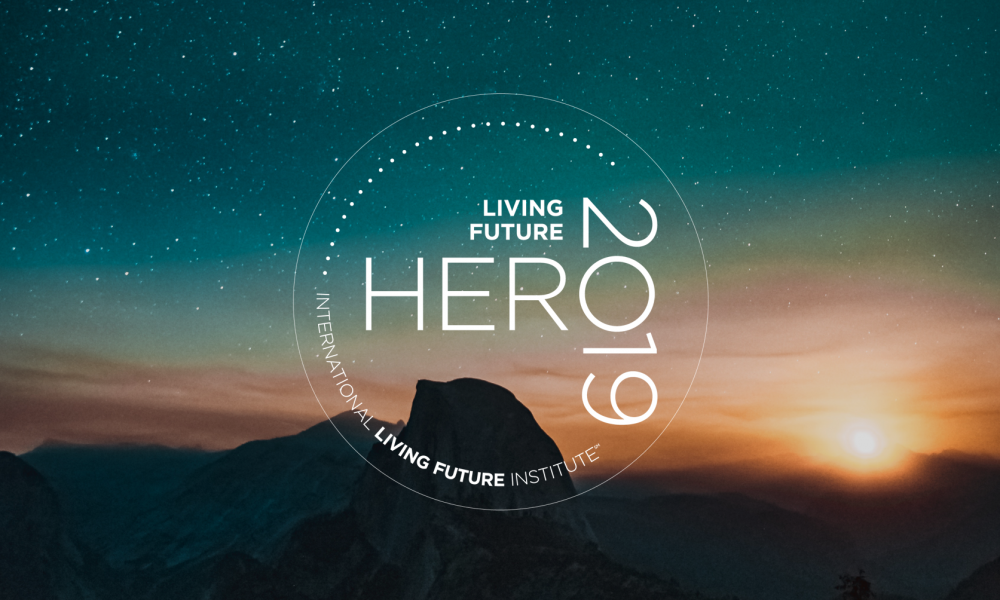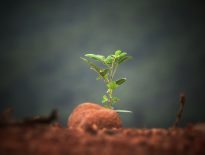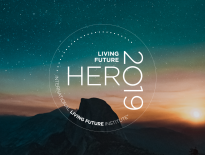Over the next few weeks, we will run a Q+A blog series showcasing the ten incredible change-makers who represent our 2019 Living Future Heroes. Introducing Lauren Sparandara, REWS Sustainability Program Manager at Google:
Q: How did you become involved with ILFI?
A: For the last three years, I have been working to obtain the Living Building Challenge Materials Petal Certification for Google’s Charleston East project, a ground-up office development in Mountain View, California. It’s one of Google’s most ambitious construction projects to date from a sustainability and workplace design perspective.
Q: What was your “aha” moment that inspired you to join this movement / become involved in ILFI programs?
A: It’s easy to get dismayed when you read or hear the news; it sometimes feels like so much is broken with regard to sustainability and the built environment. ILFI’s programs turn that paradigm on its head and instead seeks to imagine the world we want to live in—a world that isn’t just a little less bad, but instead the world we want to live in—a world that’s fully sustainable. The Living Building Challenge creates a rough roadmap for achieving a new vision while aiding teams to map the specifics of the course. We need more inspirational viewpoints and the world needs new models. ILFI and the Living Building Challenge help to shape that new vision.
Q: How did your background lead to where you are in your career now?
A: I spent many summers as a child at a summer camp in Yosemite, right around the Middle Fork of the Tuolumne River. As part of the summer camp experience, we would embark on backpacking trips into Yosemite National Park, where we were surrounded by immense natural beauty. Those summers played a pivotal role in establishing my interest in protecting and preserving nature for others to enjoy.
In college and graduate school I dedicated myself to deeply understanding sustainability from multiple perspectives. While studying architecture, I started my university’s first multi-disciplinary organization for green building, helping to envision a more sustainable future. Later as a master’s student, I focused on material sourcing and sustainability of our material supply chain.
As a professional, I have held many different roles. I have worked as a consultant working with clients to pursue their sustainability goals, often through achieving LEED Certification. At Google, I focused first on the sustainability of our global building operations and now on the sustainability for our ground-up construction projects in the Bay Area.
Q: How do you see yourself creating a Living Future in the next 5 years? How have you in the past 5?
A: The birth of my son has defined the past three and a half years of my life. Being a mom has reframed how I approach the sustainability movement—it became personal. My son will live in a world heavily affected by climate change. This compels me to show him all that I love about nature and to explore with him how we might work to improve it.
My family recently moved into the home that I grew up in Silicon Valley. It’s given my son a chance to observe the same bugs and climb the same trees that had fascinated me as a child. It has also prompted me to think more about how to genuinely “think globally, act locally.” I’ve enjoyed engaging in my sustainability community by joining the City of Mountain View’s Sustainability Task Force. In the coming years, I plan to continue to find ways to tie the work I’m doing for Google to the community that I call home.
Lastly, in these next few years I would love to continue to partner with others in furthering global efforts toward a circular economy. I am especially driven to spotlight the need to see decisions around circularity and health as being fundamentally interconnected—two sides of the same coin.
Q: What is your Call to Action for the green building community? (or our wider society? or budding leaders in this movement?)
A: Let’s continue to find ways to connect with one another, across divergent beliefs, around a positive vision for a shared future. In order for us to be effective as a movement, we must be able to bring more people into our cause. To truly expand the sustainability community, we have to listen to one another, even to those with whom we sometimes disagree. Let’s talk about the beauty of the future we want together.


